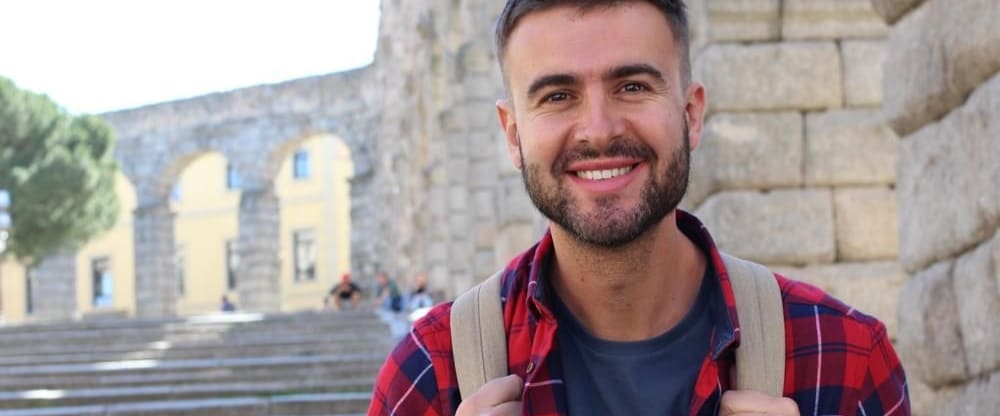How Big Data is Changing Higher Education
Six years ago, the UN General Assembly designated October 20th as “World Statistics Day.” As the science of learning from data, statistics plays an important role in how we wrangle massive quantities of information into meaningful insights -- both within the world at large, and within microcosms of that world, including the higher education sphere. As big data gets, well, bigger, its impact on higher education is expected to continue to grow. Wondering how that will play out in higher education? Let’s take a closer look.
- Student Tips

Six years ago, the UN General Assembly designated October 20th as “World Statistics Day.” As the science of learning from data, statistics plays an important role in how we wrangle massive quantities of information into meaningful insights -- both within the world at large, and within microcosms of that world, including the higher education sphere. As big data gets, well, bigger, its impact on higher education is expected to continue to grow. Wondering how that will play out in higher education? Let’s take a closer look.

Leveraging Data into Smarter Admissions
While some colleges are small enough to have human eyes looking over each and every application, others have historically been at the mercy of factors like grades and standardized test scores. But were these elements an accurate reflection of student success in college? Not necessarily, according to industry insiders.
This is why many colleges and universities are using new types of data collection when trying to determine which students will ultimately succeed and graduate. One, in particular, which might come as a surprise? Social media. According to one report from PBS NewsHour, some colleges are turning to social media data as an indicator of whether students were likely to enroll and graduate based on factors ranging from how many friends they made in online communities for applicants to whether or not they uploaded many profile photos.
The ultimate goal? To reap the largest yield with the lowest risk. Statistics also come into play here, with one university chief data officer telling NewsHour that each applicant is assigned a numerical probability of enrollment to help guide the school’s recruiting spending. The benefits, admissions counselors insist, are dual fold: schools get the largest ROI, while admitted students are more likely to be a good fit, stay on, graduate, and reap the lifelong benefits of a college or graduate degree.

Leveraging Data into Student Success
High turnover rates are costly to universities, but they’re also costly to students. As Higher Education Quality Council of Ontario Executive Director Harvey Weingarten told The Globe and Mail, “For students, leaving is a failure. There is a loss of confidence, there is a psychological cost of failure.” But the costs are far from just psychological. College dropouts also do worse than their peers across everything from lifetime earnings to health and wellness.
In refining the admissions process, predictive analytics based on demographic and behavioral data also supports increased graduation rates. This allows universities not just to admit more appropriate candidates, but to better support them once they’re enrolled. Said Weingarten, “You accepted a student into your institution because you believed they could succeed, they would grow, thrive and develop. When it doesn’t work, you have an obligation to figure out what went wrong here.”
In addition to allowing universities to more proactively help struggling students, it can also be used to help teachers do their jobs better. Because feedback happens more quickly, teachers can more immediately take teaching actions in order to ultimately provide richer learning experiences for students.
And these techniques are working. Take results seen at the U.S.’s largest public university, Arizona State. Two years after implementing a new adaptive learning platform designed to assess, remediate and re-assess student progress in math readiness, pass rates skyrocketed from 64 percent to 75 percent with 45 percent of students finishing early. Drop-out rates, meanwhile, decreased by 56 percent.

Keeping Big Data in Check
While the potential advantages of big data for universities and students alike are profound, experts are quick to warn of the potential dangers, too. And stolen data is just the beginning when it comes to safeguarding student interests -- particularly in a world in which personal information -- and the insights they lead to, thanks to big data -- is just a few clicks away.
Posits Stanford News, “Consider, for example, what might happen if data show that students who fit a certain profile struggle in a core course. Could those students be prevented from taking the class or pushed down a different path just because the data say they should?”
Enter a coalition helmed by Stanford University and nonprofit education consulting firm Ithaka S+R aimed at protecting student through responsible use of big data and the implementation of a new standard of care. The group’s recommendation? That the opportunities represented by big data be accompanied by a code of ethics comprising four core responsibilities, including the recognition of the limitations of big data and data collection; transparency across the data's collection and analysis process; the use of big data to improve teaching; and the harnessing of data-driven insights for the benefit of students.
Only with these measures in place, say the experts, can big data truly deliver on everything it promises to universities and their communities.

Joanna Hughes
Author
Joanna worked in higher education administration for many years at a leading research institution before becoming a full-time freelance writer. She lives in the beautiful White Mountains region of New Hampshire with her family.


